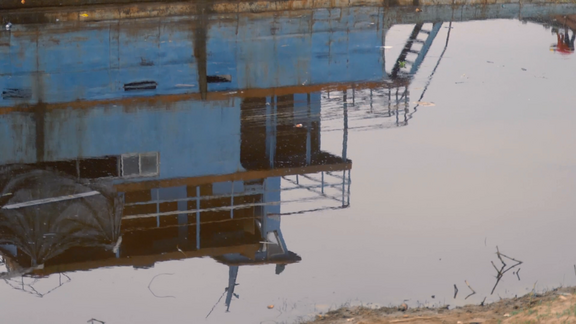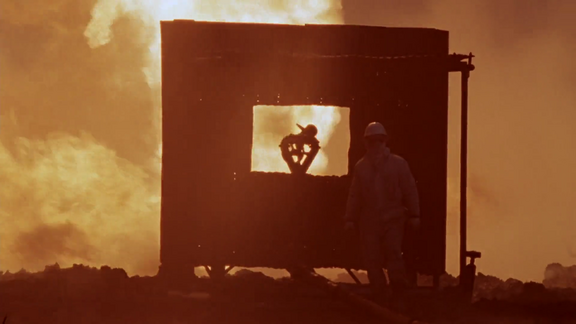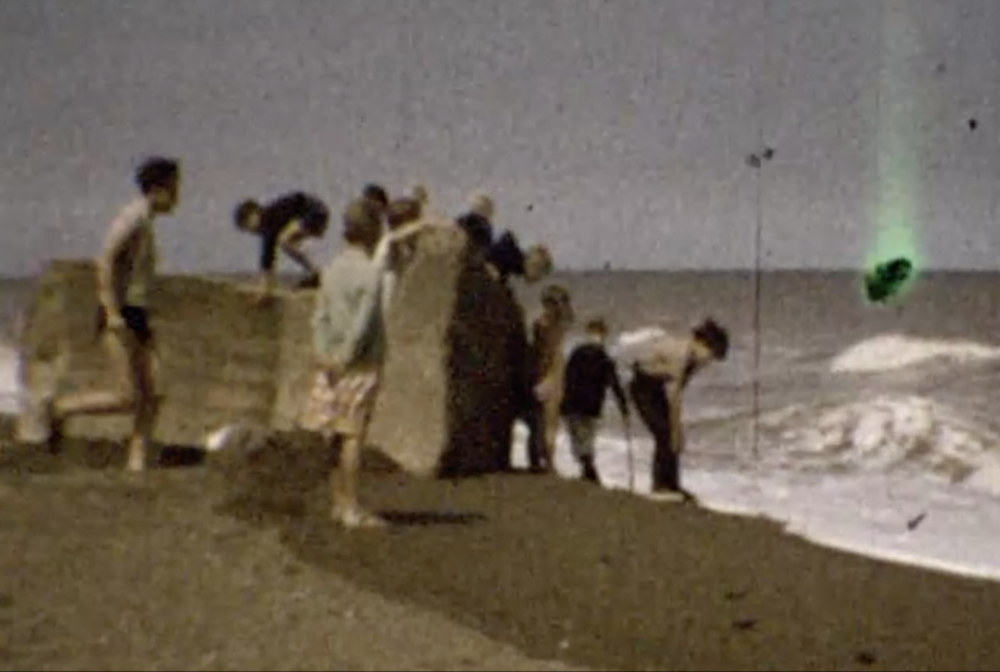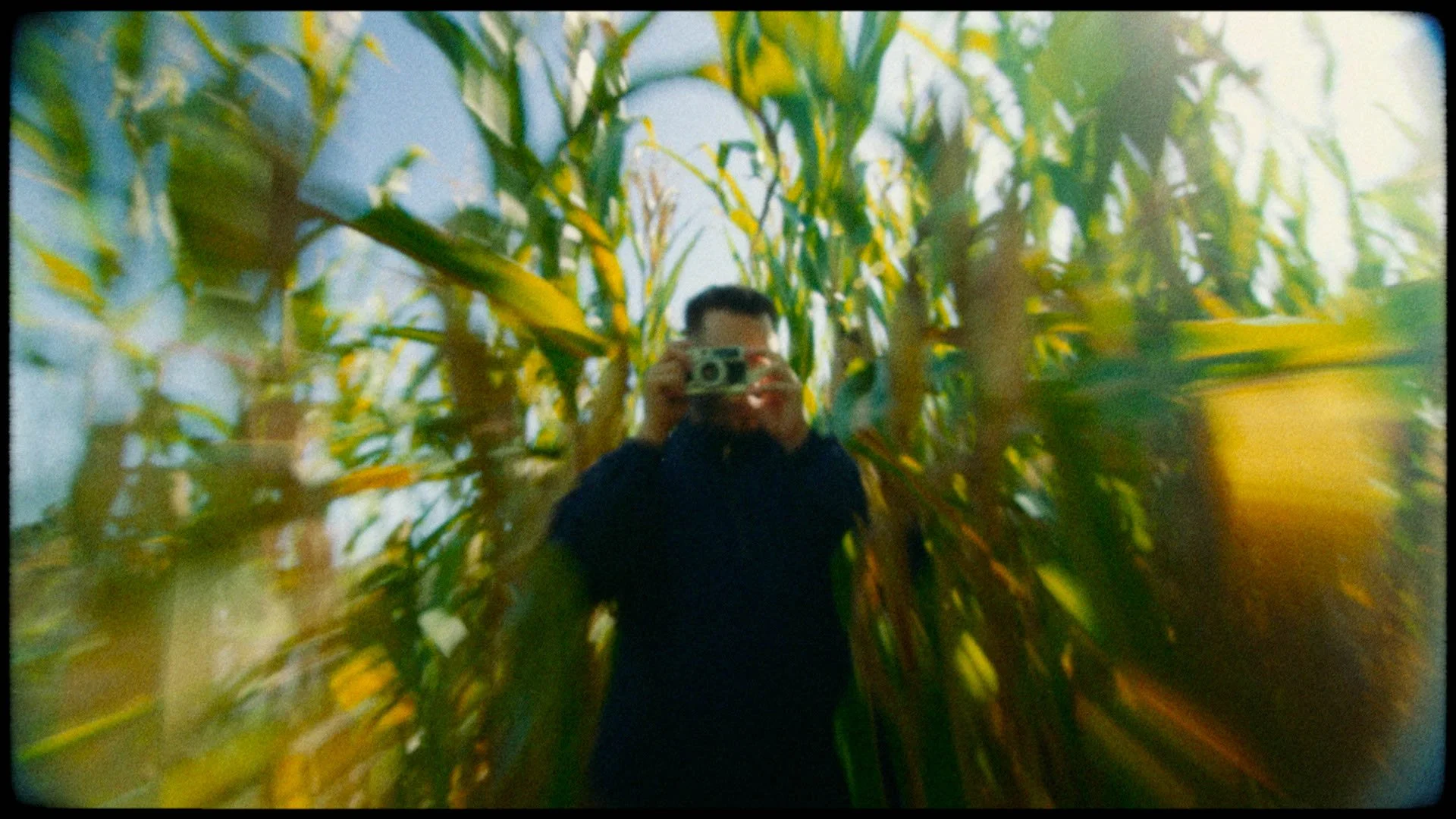Load Cycle
Directed by DANIEL MARTINEZ-QUINTANILLA PEREZ
Peru, 2020
Documentary, Experimental
A visual trance of jungle resources moving to the mainland.
Read our interview with Daniel below to learn more about the film.
DANIEL MARTINEZ-QUINTANILLA PEREZ
Member of KINOMADA
Est. Reading Time: 12 Minutes
MARK (M) Tell us a little about yourself - when did you become interested in film and filmmaking?
DANIEL (D) I’ve worked my whole life in art and been involved in social transformation, I’ve been a sort of cultural and art producer/social worker.
I’ve always loved to tell stories, create spaces for everyone to express their story through art but then I reached a point where I realized I could share not only other people’s stories but also mine. I realised my way was through film since I was not that skilled in music, painting or anything like that. In filmmaking, I found the way to tell stories that I couldn’t channel through other artistic expressions, and I always did it with a purpose of social transformation, not just remonstration but through a proposal.
It’s already been six years of looking for stories - the further the better as I want to find stories that aren’t usually told and will stir up consciousness, questioning the world we live in. I can’t dare to ‘change the world’ because I am not sure we could manage to achieve it but I can at least question the place we live in and how we are living in it.
So I think my interest comes from culture, art, my desire to create, my heed about social work, and my travels to plenty of places, looking for lost tales.
M Going through your biography, I can see that you’re a journalist so can you please tell us how your career in journalism affects your approach to filmmaking - how does it influence the types of people and stories you want to explore and tell on screen?
D Actually, I don’t see myself as a journalist even though sometimes I play the role. This all comes from long periods of sharing spaces with journalists, especially photo journalists. Life therefore took me to certain places where my shoots became news and obviously influenced a lot of my filmmaking approach because I wasn’t only looking for timeless stories, but ones that were also in the breaking news and first line. In fact, my way of doing journalism is closely linked to that of a documentalist so even if I try, I can’t shoot lineal videos like my journalist colleagues. I always have an aesthetic and artistic tendency in my filmmaking approach. I provide a different point of view than what’s usually asked by the media (my clients) due to my constant interest in documenting social problems. At the end of the day, many have become news so yes they are very connected to each other, and some news turn into documentaries such as the pandemic or different social struggles in South America.
D To me, documentaries are subjective interpretations of reality and journalism, ideally should be objective, even though true objectivity does not exist but there’s a notorious effort to keep an objective approach. In making documentaries, you take a piece of reality that you want to show and that is what I like about their language. Usually their intention is to suggest an emotion but with capturing and showing the news, it is not mandatory to use a descriptive journalist language. I don’t have to hide myself to tell a personal interpretation, because in Load Cycle we do not provide any data about the port where the people work. If I went to the Port of Masusa as a journalist, I would have been looking for data and interviewing people with the goal of telling a lot more facts than what I told in Load Cycle. Honestly, due to the private interest behind media, we cannot say what is more objective between journalism and documentary films.
On The ‘Chaucheros’ (Longshoremen)
M Please tell us a little about how you met and began filming the longshoremen on the Port of Masusa? And why were you inspired to highlight and share their work routines?
D Port of Masusa, call it so but it is not a port, it’s a beach, a place where the boats just ground. It is the entrance and exit door to Iquitos, a place where many of us arrive or depart. You could travel as a passenger in a cargo boat, which was my experience. I coexisted with the longshoremen, walked around everywhere and constantly crossed paths with them. The cargo boats are loading ware and taking passengers, crossing and bleeding out the Amazon rainforest.
Once you reach the port, it blows your mind because a bunch of men abruptly jump onto the boat, as you can see at the end of the film, to try to unload the boat as fast as possible. The way the men get paid is by each travel - this is the load cycle, ceaseless. It is a sort of competition to know who unloads the most amount of travels.
At the beginning, you do not understand what is going on but after asking I’ve realized that the men are called ‘Chaucheros’ (longshoremen) and work in one of the oldest jobs in Iquitos, reserved for the forgotten ones. The work destroys their bodies due to the nature of carrying loads without any sort of tool that could help them. Since the so-called port has no infrastructure at all, the men just cross from the boat to land balancing on a makeshift wooden stick many times, going and coming, carrying heavy weights, such as motorbikes, up to 150kg, sometimes even doubling their body weight.
D Many of the longshoremen are indigenous people and locals that could not find a better way to survive than destroying their bodies, people that suffer from their past generations, hundreds of years experiencing enslavement, since the Amazon rainforest is being exploited. The men have injuries everywhere, and it is impossible to conceive the way they work, almost as if the wheel has never been invented. But it is understandable because the employment of tools such as hoists and wheelbarrows will represent the loss of their jobs. I found this to be a very rough scenery, full of tough images and very harsh body abuse. Most of the ‘chaucheros’ (longshoremen) are damaged and many are alcoholic, too screwed.
I found it engaging to document their routine from a more suggestive approach, stirring up emotions without bringing conclusions on the viewer. I did this through an appreciation of the nuance within their brutal force as well as small breaks of rest because the men end up exhausted due to working under a hot Sun or heavy rain.
D From a cargo boat, you can see pigs, motorbikes, cows, fridges, fish and wood coming out as well as different groceries and basics that could produce the biggest isolated city in the world, with around 800,000 habitants in the middle of the Amazon rainforest. As the men are extracting natural resources, the crowds are arriving and departing to their communities which creates a sort of dystopian confluence point. The port is surrounded by sounds from many bizarre scenes nearby such as the old engines roaring from those cargo boats that cannot travel faster than 10kms per hour and non-stop radio announcing the late arrivals and departures. Iquitos is marvelous to listen to in this context - these sounds merge with the roar of the longshoremen loading ware onto their shoulders and the sound of every box falling down.
We went through an arduous job recording everything piece by piece so we could mix it in post-production and create a rhythmic chaos. We recorded with a directional microphone due to the ceaseless environmental noise. But in absence of the cargo boats, we enjoyed an overwhelming silence as there are many hours during the day without boats, maybe some distant radio playing, but nothing else.
On Editing
M I love the way your film’s edited and pieced together - it’s really captivating and enthralling! Why did you take this editing approach within your documentary - did you feel it best portrays the arduous and rigorous nature of the longshoremen’s work routines?
D While Arsenio, Mariano and I were recording, we figured out a certain pace was produced by hits of the boxes unloading, people going out of the boats and a little music playing around sometimes. There was a sort of rhythmic orchestra which is what we tried to transmit with the sound design in our film.
We worked with sound to purposefully disturb the viewer and play with different paces to create melodic patterns from that chaos. There are moments when noise embraces everything but then is broken by the hits of the boxes, so I think we tried to recreate and shape that environment into a rhythm that could allow us to stand six minutes of sonic hell. But we also had to provide the viewer some gaps of serenity and calmness to reflect the small breaks taken by the longshoremen.
It was ultimately about placing the audience in their skin, experiencing the feeling of being overwhelmed by yells while carrying heavy loads from the boats, combined with a sonorous chaos that could suddenly turn silent when the boats are completely unloaded or depart again.
D In our sound design, there is a clear intention to involve the viewer into the atmosphere of the port and longshoremen’s routine. Based on this purpose, in the video edit, we collected and used images with a not-so-clear intention in order to dress up that sonorous atmosphere and show what is happening in the port. But I would not dare say it best portrays the port - as I mentioned before, it could have been objectively told through a more descriptive language that details the disastrous history of the port, struggles of the workers and the history of all the agents taking part, or it could be told through this subjective way which tries to transmit emotions.
I think in this documentary we managed to arouse emotions, but there is an obvious lack of reporting objective information. I think playing with sounds, silence, black screens and with some disquieting images turns the footage into an immersive and empathetic experience for the viewer, I do not consider it to be the best way, I was simply more keen to explore emotion rather than reason which is why I opted for a more sensitive and less informative approach.
I would like to mention a critic who said “…it is a film that shows almost everything in the first 40 seconds and the rest is just to fool around”. We did not want to save anything, we wanted to just overwhelm the viewer so in that sense I think we managed to achieve our intention.
‘I want to find stories that aren’t usually told and will stir up consciousness, questioning the world we live in’
— Daniel Martinez-Quintanilla Perez
On Inspiration
M What are some of the films and who are some of the filmmakers that inspire you, and why?
D In this project I felt specifically inspired by the visual descriptive approach of Werner Herzog’s Fitzcarraldo (1982) as well as his film Lessons of Darkness (1992) which makes me think about the shooting process in the 1990s. I also felt inspired from amazonic filmmaking in general and Brandon Li’s visual style in La pasión de Andalucía (2019).
Fitzcarraldo (1982) by Werner Herzog
Lessons of Darkness (1992) by Werner Herzog
On The Future
M What are you planning to make next?
D I’m currently working on a short film called Spanish Files which is about the social backlash produced by the UFO phenomena. The focus is not about debating the existence of extraterrestrials, it is instead focused on showing, in a visually subjective approach, the way people are impacted by a UFO sighting and how they exist in society afterwards. It invites us to question our androcentric ideas, catholic tendency of social structure in Spain as well as our earthly beliefs, trying to establish a visual relationship between phenomena and the aesthetic pursuit of a photographer in this context. The film will question us as a species with controversial beliefs, as controversial as the UFO phenomena could be.
I am also working on a long-form film project called Barrabás which is about the war photographer Rodrigo Abd who has won prizes such as Pulitzer and World Press Photo. This is a more intimate documentary where I will be personally joining Rodrigo on his journey across America, questioning journalism and the political and social situation of the different countries we visit and cover.
At the same time, we’re working in post-production on a film project born in the last Kinomada workshop which happened in Quebec, the same type of workshop that allowed me to create Load Cycle. This project has not been assigned a name yet but is based on the history of migrants living in Quebec as refugees, or students from Africa. It is about these people who use whitening creams in an attempt to follow stereotypical beauty standards. This documentary tries to expose this tendency in a non-judgmental way and the reasons that move people to whitening their skin, following an experimental and collective process.
I am also finishing the production of Blue Crab (And a Wooden Camera) which depicts the Maracaibo lake and the situation of the fishermen living there. This short film will examine men fishing blue crabs from oil in the context of the humanitarian crisis and social and political conflict happening in Venezuela.
These are among many communitarian projects since I invest much of my time in collective creation, proposing and creating creative spaces along with different native communities and teams of like-minded people.
Mark’s Final Thoughts
I appreciate the level of detail within Daniel's answers, I think it reflects his deep passion for exploring and sharing the stories of unseen communities around the world. He paints an extremely vivid picture of the working conditions on the Port of Masusa, which are eye-opening and unforgettable in many ways.
Really enjoyed Daniel breaking down the key difference between journalism and documentary filmmaking - his explanation is very clear and evidently comes from a lot of consideration and experience.
Daniel viewing filmmaking as a process of constant learning is a moving and wonderful perspective because it implies that his projects ultimately stem from his inner values. It also means that Daniel will strive to push the boundaries of his own art and step out of his comfort zone.
Tags Documentary Experimental Landscape Live-action
Want to Learn More? Click here for insight into Daniel’s extremely challenging process of shooting the film as well as his desire to create spaces of collective work without sole directors or screenplays.
The founder of Hommage, Mark Shaba published this interview on 15.03.2022. Mark is a filmmaker from Victoria, Australia. He respectfully acknowledges the past and present traditional owners of the land on which he creates, promotes and screens art, the Wurundjeri people of the Kulin nation who are the custodians.


























